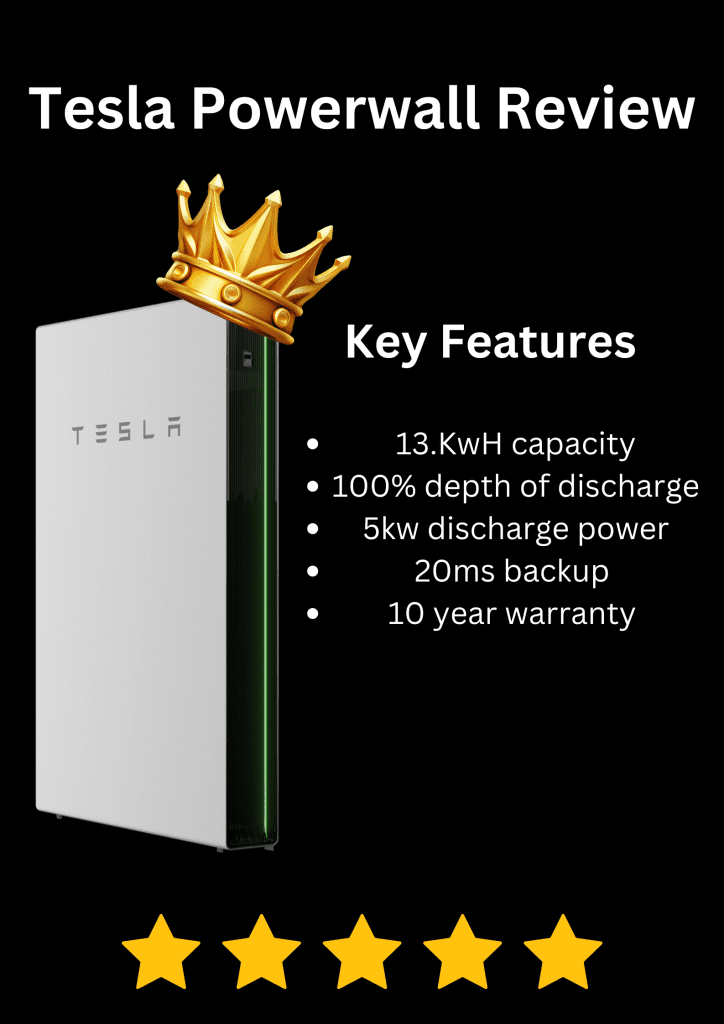Tesla Powerwall vs Givenergy All In One head to head. (2024)
We answer the question which you want to know –
Has the Givenergy All In One been able to topple the Tesla Powerwall off of its throne?
In this blog post, we give an honest review comparing the cost, power, reliability, technical support, features, warranty and our perspective as a battery storage installer.
The Tesla Powerwall is the established choice for a home battery storage system for homeowners who want to have a whole home backup. But, there’s a new battery on the block. The Givenergy All In One can compete with its class-leading rival.
Who are Givenergy?
Givenergy was established In 2018 since then the company has had a meteoric rise in the battery storage industry going from strength to strength. In just 5 years they have gone from a start-up company to undertaking 5,000 installs per month through their 350nr approved installers which CEV are proud to be part of. Their installations already save over 2500 tons of CO2 a day. They manufacture batteries in 3 state of the art facilities across the world ranging from 2.6kwh to 9.5kwh and now the 13.5kwh battery. They plan to release a range of three-phase hybrid inverters and stackable batteries to sit alongside their existing product line of single-phase hybrid inverters and solar battery storage shortly.
Who are Tesla?
A company like Tesla needs no introduction, as one of the most successful companies in the world is owned by one of the richest men in the world. Tesla has grown from a pioneering EV car manufacturer to an all-encompassing green energy solution provider. Now providing; EV’s EV chargers, Home Battery Storage Systems, PV roof systems and advance control systems all within the brand. They also provide large-scale commercial facilities including the world’s largest installed battery storage system.


Let’s take a look at the technical specs of the two batteries.
| Product | Tesla Powerwall | Givenergy All In One |
| Backup operation | Seamless backup transition | Seamless backup transition |
| Power | 3.68kw/5kw (charge and discharge) | 6kw (charge and discharge) |
| Modularity | Up to 10 batteries in parallel | Up to 6 batteries in parallel |
| Operating temperature | -20 – 50 degrees | -10 – 50 degrees |
| Dimensions in mm (WxHxD) | 753 x 1150 x 147 | 600 x 1100 x 280 |
| Weight | 114kg | 173.7kg |
| Mounting Options | Wall or Floor mounted | Wall or Floor mounted |
| Cost inc (standard install) | £9,910.00 + VAT if applicable | £8,750.00 + VAT if applicable |
Charging Speeds:
As the table above shows, the batteries are very similar. The main noticeable difference is the charging speed of the Tesla Powerwalls is only half that of the Givenergy’s.
However, if you are planning on charging the battery on an overnight tariff, if you have an off-peak window of 3.5 hours or more, you can fully charge the battery. So this difference probably only affects most people during shorter periods of high sunlight followed by lower sunlight (an intermittent day) where the Givenergy may be able to harvest slightly more energy in a day.
Capacity:
Both the Givenergy All-in-One and the Tesla Powerwall have 13.5kwh battery capacities. Interestingly, they both have a 100% depth of discharge meaning you get full use of the 13.5kwh of storage capacity. This is a significant upgrade from many battery storage systems which only provide 85-95% depth of discharge. This allows both of these units to provide a greater capacity of backup to be used.
You can have up to 10 Powerwalls in parallel whereas with the Givenergy All In One, you can only have up to 6. The total capacity with 10 Powerwalls is equal to a massive 135kwh’s of storage and the total capacity of 6 Givenergy all in one’s is 81kwh’s.
In typical installs, we find most people only need one unit, on larger properties or where you have many panels and can export at G99 rates multiple units may have a benefit. More than 6 units are rarely required.
Installation:
Both batteries have mounting instructions that require a stable loadbearing wall due to their weight which should have a fire-resistant finish. They require adequate ventilation around the units for good airflow, when they are working they have significant heat output to ventilate.
The installation process for both batteries is relatively similar, they are fixed to wall brackets and connected with standard connectors, and the All-In-One has floor-standing front feet. Both can be mounted either indoors or outdoors.
Both require an intelligent gateway to be installed which acts as an intelligent junction box installed between the main electricity meter and the consumer unit of the home. This accepts loads from the grid, PV panels, EV chargers and the house and manages outputs based on what is available to it. It also provides automatic changeover to battery power in the event of a power cut. When providing whole home backup power, if there is a power cut, all of the home’s electricity usage goes through the Gateway. Installations, where it is not possible to install the gateway close to the meter and consumer unit, will cost more and take longer. It is best to get a quote for your installation to check if it is standard or not. You can get a quote directly from us by clicking the link.
Both battery storage systems will need to have an earth rod installed due to the electrical regulations regarding islanding. All island-capable installations require an external earth rod so that in the event the earth is lost in the incoming mains cable the installation is still adequately protected.
Design and Aesthetics:
When it comes to the aesthetics of both storage options, the Givenergy and Tesla products are both sleek and modern with white-coloured cases and indented graphics and lights. They have near identical dimensions with the Powerwall being slightly wider.
The Tesla has a cleaner simpler minimalist design together with its well-known branding portrayed on the front giving it the edge in this department.
Both work with well-featured apps and online portals that allow full control over the systems and can monitor many parameters. The Tesla solution is a simple plug-and-play system which is reliable and easy to use. The Givenergy system works well once it has been set up by our skilled installers.
Features:
Both are well-featured and include the following:
- The ability to be programmed to use cheap off-peak electricity tariffs (Economy 7)
- Built-in breakers for Solar, EV chargers, and more
- 20ms switchover time. This means if you have a power cut your computer, wifi etc will continue to work uninterrupted.
- IP65 enclosures so they can be mounted outdoors.
- Built-in CT clamps for monitoring of PV, EV and home supply.
- 100% depth of discharge
- Easy-to-use app which works remotely.
The Tesla has the following additional Specifications:
- Capable of outside temperatures down to -20C
- Pure Sine Wave Output for use with all sensitive devices
- 7kw peak output & 5kw continuous output
- 10-year warranty
- IP67 Protection
The Givenergy All-In-One has the following additional Specifications:
- Capable of outside temperatures down to -10C
- THD rated at 3%
- 2kw peak output & 6Kw continuous output
- 12-year warranty
- IP65 Protection
Warranty:
The Givenergy all-in-one battery comes with a 12-year warranty while Tesla offers a warranty period of 10 years and unlimited cycles. The Givenergy could potentially give homeowners more peace of mind knowing they have an extended warranty period. But, the Tesla Powerwall warranty guarantees that you will have 80% depth of discharge after 10 years.
Performance:
Both batteries have impressive capabilities but differ slightly in certain aspects. The Givenergy all-in-one battery has a continuous output of 6kw’s which bests the Tesla Powerwall’s 5kw’s. A common issue with batteries is the operating temperature. When the outside temperature is close to 0 or sub-zero, most lithium batteries tend to stop charging and discharging. The Givenergy All in Ones operating temperatures are -10 – 50 degrees which is slightly worse than the Tesla Powerwall’s -20 – 50 degrees. The Powerwall has a liquid thermal control system to maintain stable power outputs no matter the weather. This can also be a benefit in times of extreme heat such as peak summer months under maximum generation when some installations face clipping. This is where due to an excess thermal event the generation is turned on and off to manage the heat.
Summary:
As a summary a lot of the performance is very similar between the models and the choice will come down more to items of personal preference. The table below shows a few of the headline differences but as noted above even where one of these appears it’s not always the full story so it’s always worth discussing the details with us. How we would probably best phrase the Choice is there is never a reason to not choose the Tesla unless it’s not a design you like and you feel the cost premium is too high.
| Tesla Powerwall | Givenergy All In One |
| 10 Year Warranty | 12 Year warranty |
| Programmable charging times | Programmable charging times |
| 3.68kw charging and 5kw discharging | 7.2kw peak output & 6Kw continuous output |
| 114kg Total weight | 174kg total weight (removable battery packs) |
| 13.5kw usable capacity 100% DOD | 13.5kw usable capacity with 100% DOD |
| Capable of operating during temperatures of -20C | Capable of operating during temperatures of -10C |








